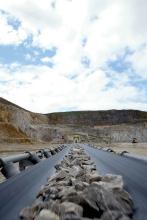At the heart of the project will be the installation of a new vertical roller mill for cement grinding which will improve efficiency, reduce energy consumption, and increase output. Hanson is also planning to invest in new rail loading facilities to allow cement to be delivered by train, reducing lorry movements.
A planning application will be submitted to Flintshire County Council in the summer. If approved, construction work will begin later this year with the new mill fully operational by early 2019.
Hanson is holding public exhibitions to explain the plans to local residents today (23 May) at Buckley Library and on Wednesday (24 May) at Penyffordd British Legion Club, both 3.30pm-7pm.
The Padeswood plant currently has four operational mills but they are old and inefficient. In addition, they do not have the capacity to grind the volume of clinker made by the kiln, creating a production imbalance and resulting in some of the clinker being transported elsewhere for grinding.
Plant manager Steve Hall said: “The plan is to mothball three of the old mills and install a new vertical roller mill capable of grinding up to 650,000 tonnes of clinker a year. The new mill will be fully enclosed in a building, minimising noise and reducing the potential for escape of cement dust.”
The project also includes construction of new cement silos alongside the existing railway line to load trains for delivery. At present the rail link is used to bring in coal to fire the kilns. In future, three trains a week will be despatched to Hanson’s depots in London, Bristol and Scotland – around 15 per cent of total cement production.







